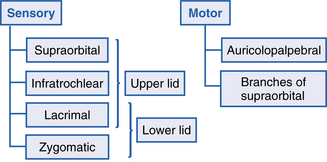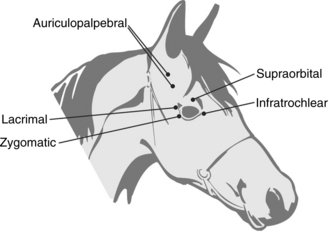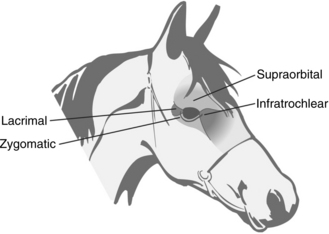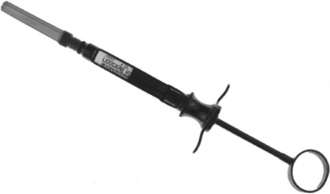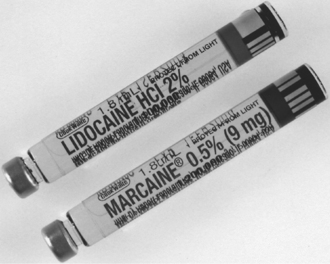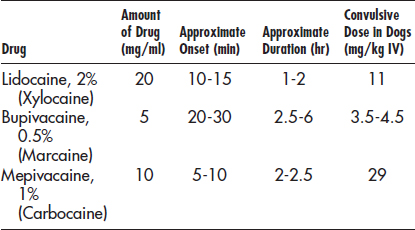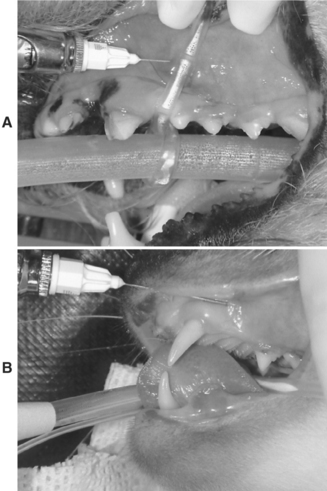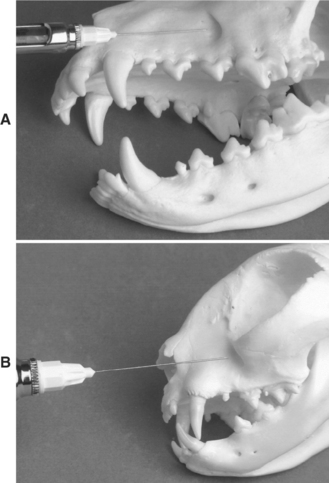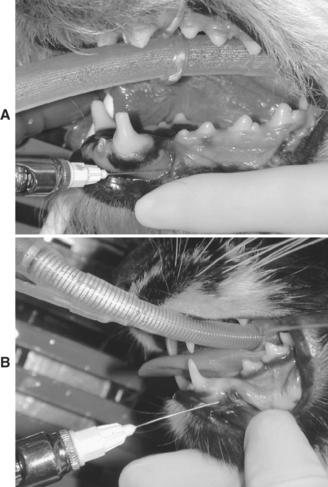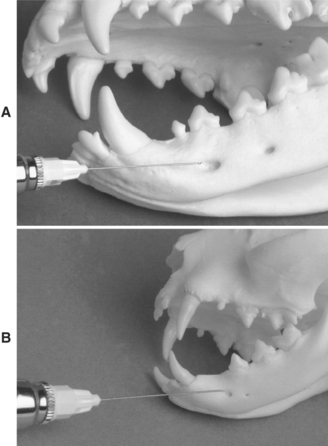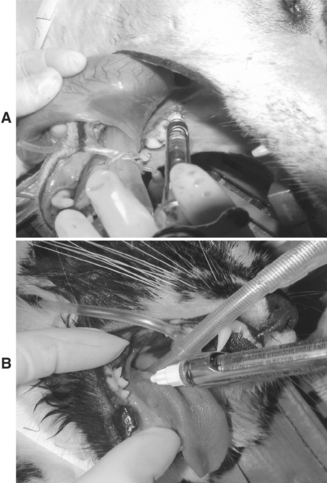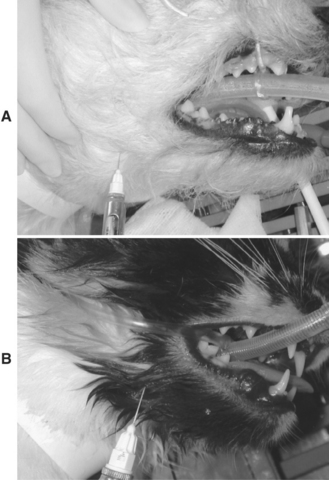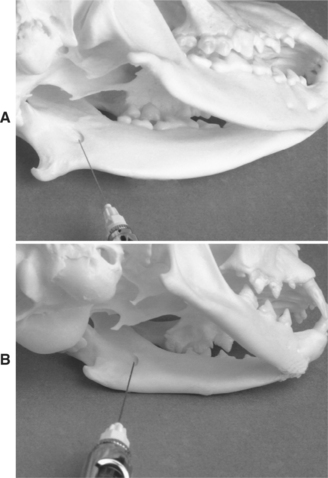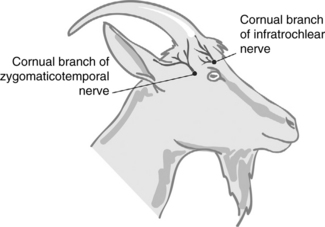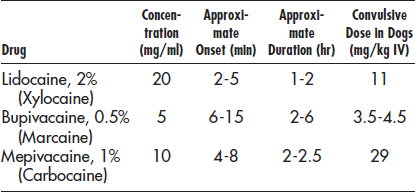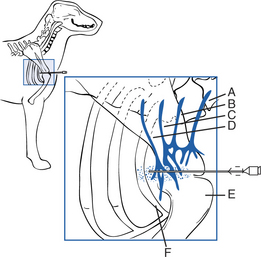Chapter 3 Local Nerve Blocks
EYE BLOCKS IN HORSES
Features
▪ Eye(s) must be protected from injury, corneal desiccation, and so on, after procedure is finished, especially after motor blocks
DENTAL BLOCKS IN DOGS AND CATS
Materials Required for All Dental Blocks
▪ An aspiration syringe is convenient and accommodates commercially available ampules of local anesthetic*
Upper Teeth
Infraorbital Nerve Block
This unilaterally blocks the following:
▪ For dogs, press on the gum just above and slightly anterior to the mesial root of the fourth premolar tooth and feel for a depression just above the junction of lip and gum
▪ For cats, press on the gum and feel for a depression at the anterior aspect of the zygomatic arch, just above the third premolar tooth
Lower Teeth
Mental Nerve Block
This unilaterally blocks the following:
Inject at mental foramen on lateral side of anterior portion of ramus of mandible. Feel for a depression in the gum below the first premolar and just below the junction of lip and gum.
Mandibular Nerve Block
This unilaterally blocks the following:
Inject at mandibular foramen on medial side of posterior portion of ramus of mandible. Insert the needle medial to the lower molars and direct it posteriorly to “skim” along the bone. The foramen has a bony lip at its anterior border. Continue just past this point and inject.
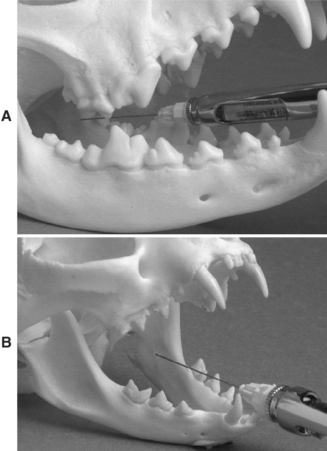 A, Injection site for mandibular foramen in a dog. B, Injection site for mandibular foramen in a cat.
A, Injection site for mandibular foramen in a dog. B, Injection site for mandibular foramen in a cat.DEHORNING OF CATTLE, SHEEP, AND GOATS
Features
▪ Ring block may be more practical in sheep and goats because of more variable location of nerves; an arc is injected near anterior border of horn to affect all nerves that supply horn
▪ Occasional failure may result in some animals because of nerve supply from deep branch of the nerve to the frontal sinus, which cannot be blocked
Nerve Supply to the Horn
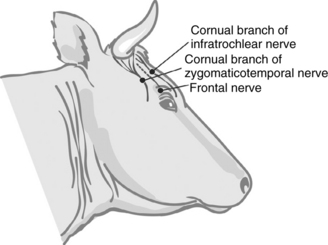 Sites for injection of local anesthetic for dehorning of cattle. The frontal nerve innervates the horn in only some animals.
Sites for injection of local anesthetic for dehorning of cattle. The frontal nerve innervates the horn in only some animals.Suggested Total Volume of Local Anesthetic to Use per Horn
| Anesthetic | Adult Cattle (ml) | Calves, Sheep, and Goats (ml) |
|---|---|---|
| Lidocaine | 10–15 | 3–5 |
| Bupivacaine | 5–8 | 2–3 |
| Lidocaine + bupivacaine | 5–8 | 2–3 |
Technique
BRACHIAL PLEXUS BLOCK
Overview
▪ Bupivacaine is the local anesthetic agent of choice because of its longer duration of action compared with lidocaine
Equipment and Considerations
▪ 18- to 22-gauge spinal needle or 18- to 27-gauge syringe needle depending on size of patient (1 inch for cats and small dogs; 3 inches for large dogs, ruminants, and foals)
▪ Volume to use depends on size of animal (e.g., for bupivacaine use 0.5 ml for cat or small dog; administer up to 10 ml in large dog, ruminant, or foal)
Technique
▪ Insert needle medial to shoulder joint and direct it parallel to vertebral column toward the costochondral junction
Nerve Stimulator Technique
▪ By observing for muscle twitches, through electrical stimulation of the nerve, the practitioner can position a needle extremely close to the nerve; the accuracy of local anesthetic blocks can be improved through this technique




Stay updated, free articles. Join our Telegram channel

Full access? Get Clinical Tree


